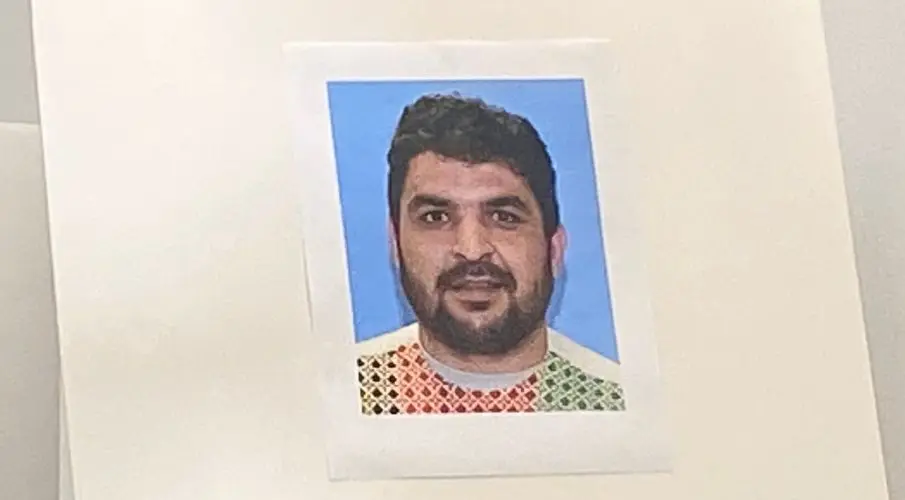Again and again the same question arises: What drives a person to commit such an atrocious act? – Over the past hours we have investigated Rahmanullah Lakanwal intensively – conducted conversations, verified official information and spoken with people who knew him. What emerges is far less dramatic than much of what is claimed online, and at the same time more serious, because the gap between verifiable facts and freely invented narratives is growing wider and wider.

It is established that Lakanwal is 29 years old, an Afghan citizen and came to the United States in 2021 through Operation Allies Welcome – part of the group that was evacuated after the fall of Kabul. After his arrival he was settled in the state of Washington, in Bellingham, a quiet city north of Seattle. There he lived with his wife and five children in a rental apartment. The family is in complete shock. Neighbors describe them as unobtrusive and friendly, not people who caused problems or stood out. His past in Afghanistan is fragmentary but not fabricated: official bodies confirm that he worked with U.S. agencies, including the CIA, as part of a partner force in the Kandahar region. A relative describes him as a long-serving soldier in the Afghan army who worked alongside American forces. Both lines fit together in general terms, but remain unconfirmed in detail – and that, too, is part of the truth.

This is where Rahmanullah Lakanwal lived together with his wife and five children
For his time in the United States, our investigation reveals a clear picture: he had a regular status, his asylum application was approved in April 2025, already at a time when the Trump administration was in office. Authorities emphasize that there are no indications of prior criminal offenses, no entries in databases, no known red flags. He worked in Washington State, among other things, for Amazon and Amazon Flex, typical jobs many newcomers take to support their families. There is nothing reliable known about university studies or higher education. Regarding the attack in Washington, the information is thin but clear within its boundaries: prosecutors say Lakanwal drove across the country armed and shot the two National Guard members at close range. He was injured himself, not life-threateningly. The investigation is being conducted under possible terrorism review, but a motive has not been officially named. Here, too, there is more speculation than substance.
A large portion of the viral material circulating since the attack – supposed LinkedIn profiles, alleged NGO jobs “with Einstein”, poorly made ID screenshots and invented résumés – does not withstand scrutiny. Many of these images first appear in anonymous Telegram channels and are then spread without any verification. Authorities have not confirmed any of these supposed “pieces of evidence.” Nor are there reliable details on his political views, possible psychological stress, trauma, financial problems or any targeted radicalization. What is being circulated on X/Twitter and Telegram with labels such as “sleeper”, “CIA asset” or “ISIS” is, at this point, nothing more than speculation that feeds on itself – and often tells more about those producing these rumors than about the perpetrator himself.

This supposed deployment document of Rahmanullah Lakanwal looks like something from a parallel universe. Anyone familiar with Afghan partner forces or CIA structures sees immediately that such a card never existed. The layout looks like craftwork, the photo seems pasted in, the background artificially “aged.” Added to that are crude spelling and typing errors – exactly the kind of thing you never see on official military or intelligence documents because they are checked repeatedly. Nothing is accurate in terms of content either. U.S. ranks such as E-5 do not appear on Afghan IDs. Partner forces of the CIA did not carry colorful laminated cards openly stating their cooperation with the United States – especially not with a private phone number you are supposedly meant to call “with questions.” The fact that the card also names “Fire Base Gecko,” a heavily secured CIA facility, makes the whole thing completely implausible.
This image is not evidence but an improvised prop intended to support a specific story. It caters to the desire for quick explanations, not the demand for truth. That is precisely why it must be identified early for what it is: a fake designed to be used politically before the true facts are even known.
What remains is a man between two worlds and his horrific act: in Afghanistan embedded in structures created by the United States itself, and in America trapped in a daily life of low-wage jobs, five children and the attempt to settle in. None of this explains the attack. But it shows how limited the factual basis is and how quickly a person – barely an hour after an act – becomes a projection surface for political narratives. But whatever punishment will follow and whatever eventually becomes known about his motives – none of this changes anything for the Beckstrom and Wolfe families. The Beckstroms have lost their daughter Sarah. The Wolfes hope every minute that their son Andrew survives. None of it can be justified, none of it explained away, none of it excused by any personal history of Rahmanullah Lakanwal. It does not matter what country he comes from – what matters is that he has killed.
Investigative journalism requires courage – and your support.
Help sustain our reporting and our work. Even a small contribution helps us continue every day. Kaizen operates without ads, without subscriptions, without corporations, without political parties.
Independent – Critical – For Everyone
Thank you for making independent journalism possible.
Updates – Kaizen News Brief
All current curated daily updates can be found in the Kaizen News Brief.
To the Kaizen News Brief In English
Es ist nicht zu verstehen, wie Menschen andere Menschen töten. Was muss in deren Köpfen vorgehen. Die AFD und Trump werden das ausschlachten und daher finde ich die sehr sachliche, aber doch direkt Berichterstattung so gut von euch.